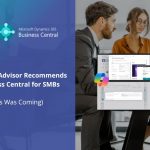The Service-Based Business Model Train
Let’s chat about the business world today – it’s fast-paced, evolving, and digitally driven. Companies, big and small, across various sectors are shaking things up with their digital and subscription-based offerings, project ventures, and service-based methods.
It all started in the tech world but now, the change is spreading – every type of organization is harnessing the power of data to transform their business models. It’s revolutionizing how we sell services and products and reshaping the way we interact with customers.
Many companies have entered the era of service-based business strategies – they’re the key to consistent, ongoing revenue, shaking off the old one-and-done transactional approach. Whether it’s subscription services, project-based services working on a consumption model, or fixed-fee project services, they all lead to stronger, more lasting relationships with customers.
Traditional ERP System Limitations
However, if we’re talking about transforming your business model, it’s important to address the elephant in the room – the limitations of traditional ERP systems and business methodologies. These outdated approaches can be major roadblocks to real, positive change. Some of their limitations are:
- Lack of visibility into financial and operational performance
- Absence of insightful data to drive decision making and innovation
- Risk of errors from manual processes and siloed systems
- Inability to align financial markers with operational measures
- Unsuitability for service-based business models that rely on recurring revenue and customer relationships
It’s paramount for today’s businesses to find an ERP system that supports their service-based focus, encompassing financial management, sales, project management, resources, and personnel. Such a holistic tool can drive financial, operational, and organizational success. To make a recurring-revenue business model successful, aligning financial markers with operational measures is essential—a task traditional ERP systems are not equipped for. Integrating financial, operational, and organizational data reveals hidden insights and opportunities to boost the value of a service-focused business model.
5 Strategies to Thrive in The New Business Model
To address these challenges, we’ll go over the five strategies on how organizations can deliver better customer outcomes. This approach outlines the method through which a company offers customer value, encompassing aspects like financial configurations, operational systems, and organizational patterns. These strategic methods will finetune your financial and operational framework – let’s get into them!
Strategy #1 – Create a Change Catalyst
Forming an adaptive company doesn’t happen by chance; it’s a deliberate construct. A Change Catalyst strategy provides a detailed plan for ongoing business operation improvements, leveraging market, financial, operational, and customer data to prompt changes. It identifies the leaders who will encourage improvement and unite teams to work on digital upgrades. Here’s your guide to crafting this improvement plan:
- Create an effective team that includes financial, operational, and organizational leadership, all interconnected through the power of cross-functional cooperation.
- Establish a business rhythm incorporating updates on the market, customer, financial, and operational data.
- Integrate financial model studies and suggestions into your planning and forecasting routines.
- Develop a Business Operations Experience (BX) diagram highlighting financial, operational, and organizational processes, avenues, allies, and performance indicators that promote improvement.
- Outline company structures that can readily expand or contract based on growth strategies.
- Plan where to alter business blueprints and where to speed up implementation.
Strategy #2 – Activate Customer Insights
The current market landscape is defined by a customer-centric approach that demands digital and customized experiences. Research from Forrester has shown that companies doing well with these online activities were more robust during the pandemic and are ready for upcoming opportunities.
Developing these experiences, which are key to online business strategies, requires a thorough and prompt knowledge of your customers. As services become more important, handling and analyzing the increased data flow is challenging. This is where a real-time Customer Data Platform (CDP) comes into play. It consolidates this data and supplies the thorough behavioral and demographic data needed to improve your business operations.
Here are five ways you can use a CDP to activate customer data in real-time:
- Understand your customers completely: In a world full of data—ranging from demographics to interests and more—the challenge lies in synchronizing tools that provide cohesive, actionable data. The foundation of creating distinct experiences and services is understanding your customer base. Combine real-time transactional, behavioral, and demographic data to get a comprehensive view of your customers.
- Boost customer profiles with distinct signals: Enrich customer profiles using first and third-party sources to uncover unique preferences and interests. Establish a system to continually gather, assess, and monitor real-time feedback. Utilize customer voice systems and processes to hear every customer and grasp their view of your services.
- Extract valuable insights with analytics: Exploit AI-powered insights to anticipate customer behavior such as lifetime value, risk of churn, and the next best action. Allow data experts to delve deeper into the data generated across the business including customer, financial, operational, and unstructured IoT data.
- Execute impactful actions confidently: Utilize analytics-derived insights to drive confident decisions, personalize engagement across channels, and automate customer-focused experiences.
- Strengthen customer trust with a secure CDP: Uphold trust with policies regulating data collection and usage to safeguard customer privacy. Respect customer consent with integrated configurable tools that automatically record and manage consent across all business processes.
Strategy #3 – Innovate Your Financial Models
There’s no doubt that it’s crucial to invest in finance-centric innovation to stand out. Leveraging customer insights to uncover their desires is equally important as crafting appropriate financial plans to maximize value for business expansion.
Finance-centric innovation can be achieved through enhanced financial visibility and improved profitability. Here’s how:
- Foster Flexibility: Nurture a culture of transformation and ongoing enhancements within your finance team. Innovative ideas are sparked by a vision and inspirational leadership as well as collaboration, agility, and patience. Encourage team members to network extensively and frequently collaborate with significant stakeholders on designing more agile business models. Equip them with adaptable financial management technology to support emerging business models across your worldwide operations. Teams given the time and motivation for relentless business experience improvement will contribute innovative approaches.
- Concentrate on Impact: The BX map is more efficient than traditional business or strategy plans for identifying areas of friction, strength, and transformation within your financial operations. With the help of your change catalyst strategy’s map, prioritize initiatives that will prompt the most change. Choose key performance indicators that align your team with transformation goals.
- Welcome Digitalization and Speed: Employ the BX map for quicker and more adaptive reporting, and shorten cycle times with robotic process automation (RPA) to eliminate redundancy and simplify labor-intensive and error-prone tasks.
- Implement Governance and Standardization: The complexity of systems and processes affect efficiency, responsiveness, and agility. However, disparate systems can be managed. Trustworthy cloud-managed data platforms will assist you in consolidating data and enhancing standardization across international subsidiaries. Once you have access to unified data, you can establish centers of excellence for processes such as collections, eliminating the need for separate departments repeating the same work.
- Achieve Insight: Agile strategy development, real-time risk evaluation, and faster decision-making all rely on insight. Speeding up digitalization builds the groundwork, but it’s also necessary to incorporate advanced data analytics and AI to foster finance-centric innovation. The era of a specialized team handling analytics is over. Contemporary tools will link stakeholders and assist them in better comprehending, interpreting, and utilizing financial data for more assertive operational decisions.
Strategy #4 – Transform Your Operational Processes
The shift to service-oriented business models demands fresh strategies for providing value to your clients. While managing supply chains remains integral across numerous sectors, adopting a service-centric delivery model necessitates an amplified concentration on your project management skills. The key to operational success hinges on moving away from isolated deliveries towards continuous interaction and project achievement.
Adopt these five methods to link data from the initial customer interaction to operational fulfillment:
- Apply flexible project operations lifecycle management: Foster a successful service operating framework with an innovative approach that fully revolutionizes business operations with the power of actionable data.
- Connect with customers: Develop a uniform, smooth customer journey that fosters faith and loyalty. As service sales demand more accuracy, integrated data and operational insights will boost your ability to secure more contracts with superior contract administration and more precise project estimates, predictions, and appraisals.
- Enable your team: Equip your employees with the necessary tools to customize service, collaborate, exchange knowledge, enhance work quality, and submit time and expenses punctually. Isolated project, time, and expense management tools hinder your team from performing at their peak. Integrated solutions will offer contextual understanding within the work process to aid your workforce in making informed decisions, while also enhancing teamwork and flexibility.
- Streamline project finances to enhance profitability: Recurring, subscription, and project revenue demand a distinct strategy for billing and revenue recognition. The capacity to oversee billing queues and include spontaneous transactions will result in more exact invoicing. It’s crucial to ensure your system accommodates a blend of accounting rules for cost and revenue, accruals, and postings.
- Revolutionize services: Above all, you’ll need a fresh batch of KPIs to decrease service delivery expenses, speed up time-to-market, concentrate on the most beneficial projects, and establish new digital income channels.
Strategy #5 – Align Your Organizational Structures
The paradigm shift towards a service-based business model underscores the importance of your team. Your employees bridge the divide between your business and your customers, meaning their relevance has never been greater. By effectively managing resources, honing skills, overseeing knowledge management, and uplifting the employee experience, your company is able to retain exceptional talent and utilize them more effectively. Tools that self-serve to boost wellbeing, increase productivity, and enhance teamwork enables your employees to perform optimally.
Moreover, organizational structures need to evolve, becoming more integrated and adaptable as the process of servitization erases the borders between traditional departments. By realigning organizational structures, you can facilitate workforce transformation, swiftly scaling teams up or down based on business needs.
Transforming into a truly service-focused company calls for the following strategies:
- Attract premium talent: Top performers are drawn towards companies that resonate with their goals, offering a conducive work culture that enables them to thrive.
- Link employees to impact: As new financial and operational models call for varied role profiles, team dynamics, and skills, aligning roles with objectives and key results (OKRs) and the new business operations experience (BX) will enhance the customer experience (CX).
- Enable your workforce: To achieve operational excellence, all stakeholders must have a clear overview of customer outcomes, project or service specifications, timelines, and budgets. This transparency enables your employees to do their best work, focused on results while your organization benefits from the desired outcomes.
- Streamline project resourcing: Deploy dynamic scheduling to ensure the right personnel, with the right skills, are working on the right projects, at the right time. This not only satisfies your customers but also reduces employee turnover and operational expenses.
- Draw upon workforce insights: Utilize insights into resourcing, productivity, and wellbeing to look after your team better. Ensure employees, regardless of location, get the chance to work on stimulating projects and incorporate productivity insights into project delivery plans to progressively optimize operations.
With the application of these five strategies, you can unlock essential insights that empower you to thrive in a ‘service-based’ world. It opens the possibility for reinventing your business models in ways that spur growth, cause major industry disruptions and effectively cater to your customer needs. This trend is becoming widely adopted across all industry spheres beyond consumer markets. To reach customers more effectively, businesses are adopting AI and machine learning-based connectivity models.
Microsoft Dynamics 365 Business Central is a powerful tool for these enhancing financial and operational models – driving resilience and innovation. Its inherent capabilities offer improved financial agility, operational expertise and project-centric services success. Make timely and informed decisions based on comprehensive, real-time reporting, embedded analytics, and AI-generated insights.
Get Guidance from an Experienced Microsoft Solutions Partner Starting with a Proper Business Process Review (BPR)
Dynamics 365 Business Central’s unique strength lies in how it transforms data from inside and outside the Microsoft cloud into actionable insights,which drives more effective results for your team. With the right digital capabilities and the Right Microsoft Partner like TMC, you can achieve the agility to navigate through change, pivot complex operations quickly and keep your customers engaged for a lifetime.
To grasp a clear and full understanding of how Dynamics 365 Business Central works for your business, get a comprehensive assessment of your system with TMC’s Business Process Review today!
About TMC
TMC (Technology Management Concepts) is a renowned Gold Microsoft Dynamics Partner located in Southern California. With over 350 Microsoft Dynamics ERP and CRM users in their clientele, TMC has a strong track record of software implementation spanning over 30 years. They have consistently been recognized as one of the top workplaces and fastest-growing businesses, earning the prestigious INC 5000 recognition and consistently ranking in the top 100 VAR.
Jennifer, the esteemed CEO and President of TMC, has been nominated for the Inspirational Woman and Role Model of the Year awards by the LA Times B2B Publishing Inspirational Women Awards and CRN Role Model of the Year Award, which showcases her exceptional leadership.
The TMC team comprises experienced professionals from various industries, bringing their unique blend of software expertise and practical business application to the table. This diverse background has been crucial to their consistent success. At TMC, they are committed to making a positive and lasting impact on their clients and each other.
What sets them apart is their distinctive and vibrant culture. Although they have the necessary expertise and resources, they foster a close-knit environment where every team member is valued and contributes to a collaborative, creative, and enjoyable work atmosphere. They strongly believe that a happy and fulfilled team leads to enhanced client experiences.










